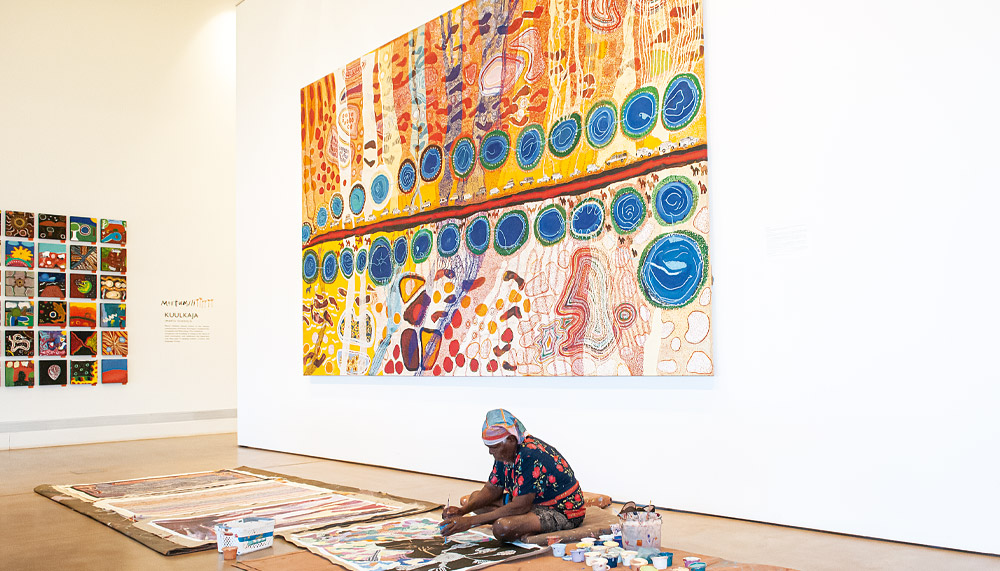Martumili Artists bridges the generation gap by celebrating the work of remote desert community painters.
Story + Photos Mandy McKeesick
Ngamaru Bidu sits on a cushion with paintbrush in hand. Above her is a huge 3 x 5m dot painting mounted on a pristine gallery wall. Surrounding her are partly finished canvases and a kaleidoscope of paint pots. Ngamaru, born into a nomadic desert family some 70 years ago, is a member of Martumili Artists, an Aboriginal art group representing remote Indigenous communities, which is showcased in the East Pilbara Arts Centre in Newman, WA.
Martumili Artists formed in 2006, bringing together artists from Parnpajinya (Newman), Jigalong, Parnngurr, Punmu, Kunawarritji, Irrungadji and Warralong. “The Martu are traditional owners of vast stretches of desert country,” manager Carly Day says. “Mili means ‘to belong to’ so Martumili means ‘belong to the Martu’.”
The painting beneath which Ngamaru sits is a perfect example of the Martumili ethos. Titled Our Country, it was compiled by 10 artists in 2011 and illustrates country around the Canning Stock Route area. Blue waterholes flank the route, footprints – both human and animal – transect the landscape, and tourists in 4WDs are depicted to acknowledge changes that have occurred over time.
In 2016 the East Pilbara Arts Centre opened to host Martumili Artists. The facility was funded by several bodies – BHP ($4.4 million), the WA State Government Pilbara Cities Initiative, delivered by the Pilbara Development Commission ($3.5 million), Lotterywest ($600,000) and the Shire of East Pilbara ($800,000). “The building was designed by Officer Woods Architects after a long consultation and clear directives from the artists themselves,” Carly says. It includes the gallery with a moveable wall to support large paintings, studio areas, an indoor water tank, storage, administration and a camp store for remote travel. “It has an indoor/outdoor feel, with inclusive spaces in which to wander in and out. The water tank is strategically placed for cultural avoidance relationships – giving access to facilities from both sides – and is fully functional, which helps to keep the building cool.”
The centre hosts up to 200 artists a year, with 40–50 using it on a regular basis.
This story excerpt is from Issue #132
Outback Magazine: Aug/Sep 2020









